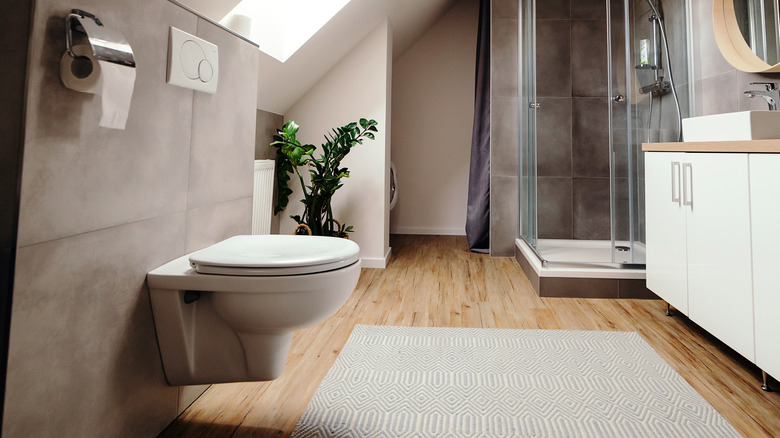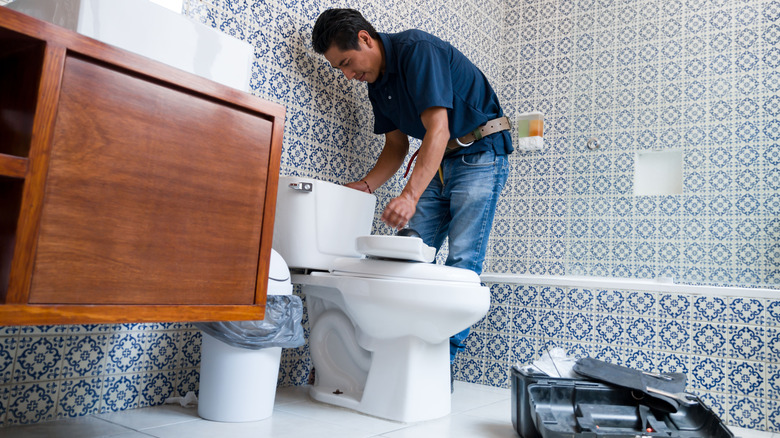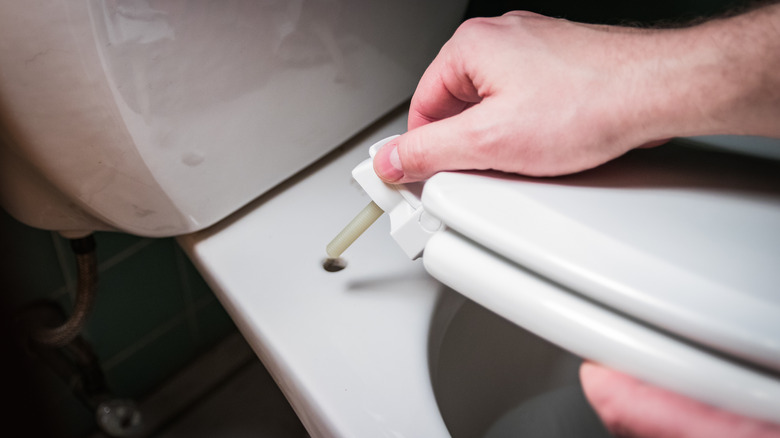The First Thing To Do With Your Toilet When Moving Into A New Home
We may receive a commission on purchases made from links.
Moving into a new home isn't just thrilling — beyond the palpable excitement, an ocean of possibilities awaits your discovery. Amidst the chaos of unpacking and organizing is an often-ignored item in the first-day-of-moving-into-your-new-house checklist — toilet seat replacement. This isn't exclusively about hygiene (though that alone should send you into a toilet-seat-hunting overdrive). You want to take ownership of your new sanctuary and ensure the room is tailored to your needs, right down to the smallest detail.
But before enthusiasm carries you off, note that the quest for the best replacement is more than just determining the size of the existing toilet bowl. You must also consider materials, comfort, durability, cost, appearance, and noise. Once you've found something that checks all the boxes, it's time to tackle the installation. Removing the old seat, cleaning the bowl lip, and aligning and fastening the new seat are all it takes for this DIY task to spruce up the ceramic throne in your new home.
The perks of replacing a toilet seat
While not the most glamorous of tasks, replacing toilet seats is primarily a game of hygiene. These high-touch surfaces can be treasure troves for bacteria, making them a potential health risk for your family. A fresh seat is just the right thing to banish those unpleasantries lingering from the past. But there's more to it. From cushiony softness to heated opulence, a world of options lies in wait — you could let your style and individuality shine through with the colors, materials, and designs at your disposal.
For something more functional, toilet seats with slow-close hinges help prevent abrupt, noisy closures. Some models — like the Angel Shield wood veneer natural toilet seat from Amazon – incorporate quick-release hinges for efficient under-the-hood scrub-down. As for longevity, toilet seats mature with age like fine wine, but not always in the appealing sense. A quality replacement gets you started with a sturdy, reliable product engineered to last longer. Consider also that older options may not offer the same support and stability as their modern counterparts. A new seat ensures a safer seating experience, which is great for families with kids or those with mobility challenges.
How to replace a toilet seat
Mastering how to measure a toilet seat for replacement will spare you the nightmare of an ill-fitting product. Grab a measuring tape and determine the distance between the bolt holes and the lip front. Then, decide between a round seat (16.5 inches) or an elongated version (18.5 inches). Wooden options are warm and durable but demand a lofty price, whereas plastic counterparts are affordable, easier to clean, and versatile in colors, however, they can feel colder in winter. Consider noise-reducing features like slow-closing or padding, and above all, ensure the replacement is comfortable and blends with your bathroom's aesthetic.
To replace a toilet seat, start by prying open the plastic bolt caps. Next, hold the fastener from underneath with a wrench or pliers, then loosen the bolt from above using a flathead screwdriver. For problems like stuck or corroded bolts, try using penetrating oil to loosen them, or a drill or a hacksaw to remove them. Once the old seat is removed clean and disinfect the rim, then align the replacement, and insert the toilet seat bolts through the openings. Once you have tightened the fasteners, insert the bolt covers and test your new installation for functionality and comfort.


